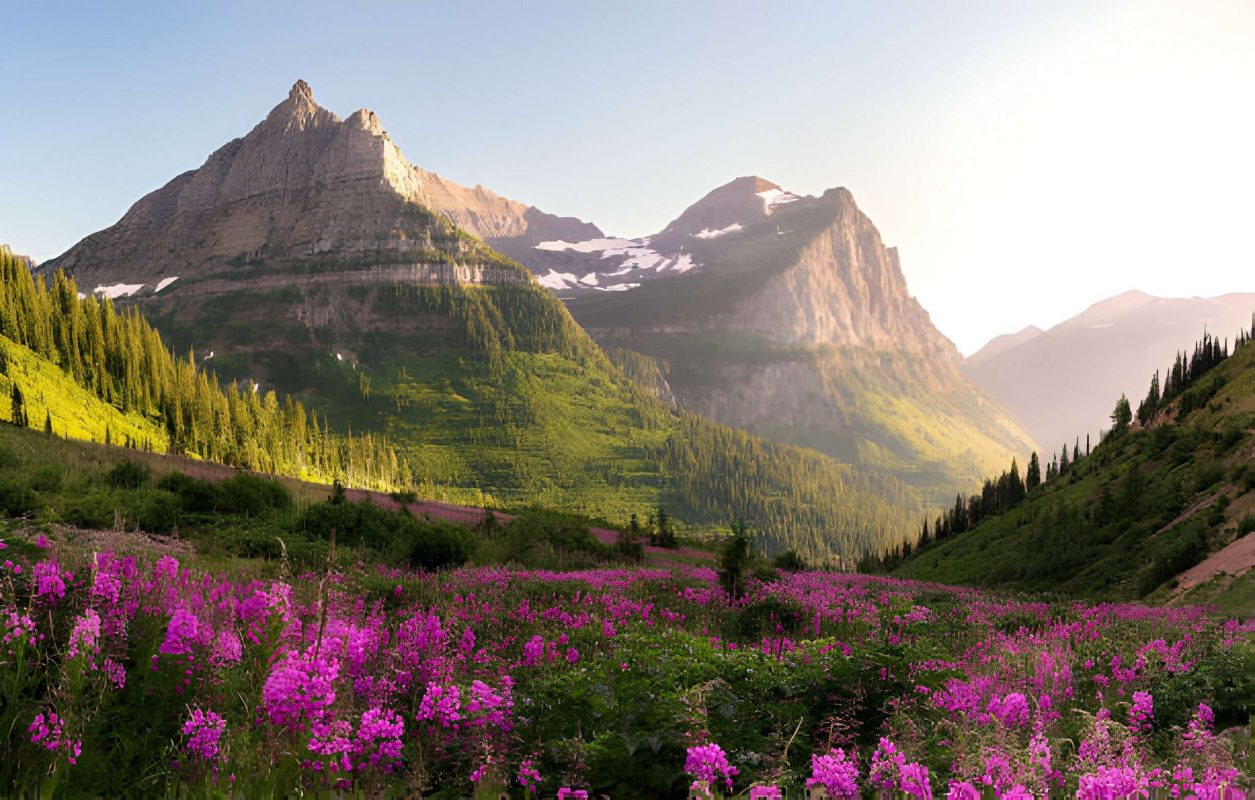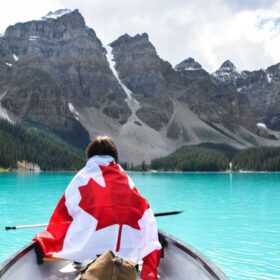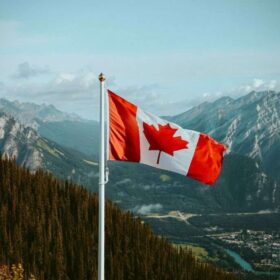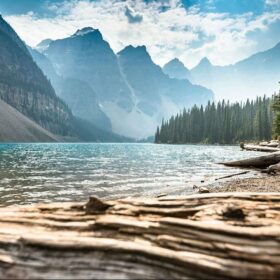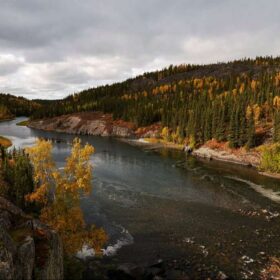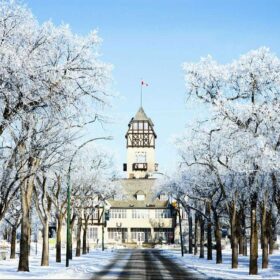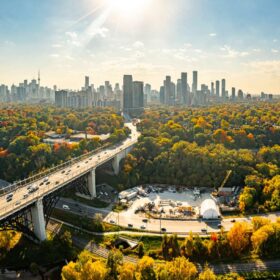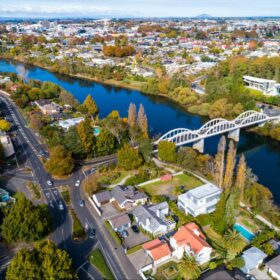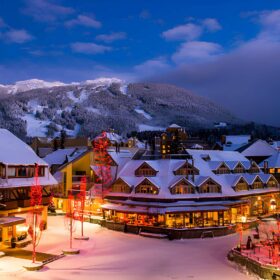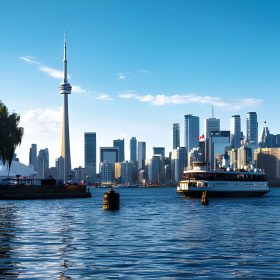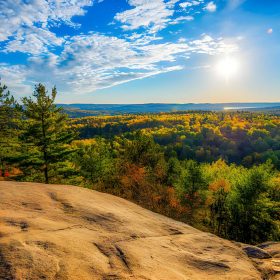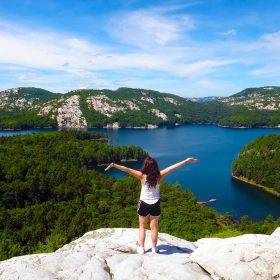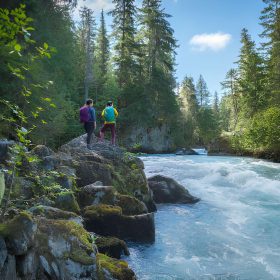Glacier National Park in northern Montana is appropriately referred to as the Crown of the Continent. This expansive and stunning natural landscape encompasses snow-covered mountain peaks, deep glacial valleys, and glistening alpine lakes adorned with icebergs. As one of the top parks in the United States and a crown jewel of the National Park Service, it attracts over three million visitors annually, particularly during the peak season from July to September.
When planning a vacation to Glacier National Park, it’s advisable to allocate as many days as possible. The park spans over a million acres, offering more than 700 miles of hiking trails to explore. The primary route for many adventures is the 50-mile Going-to-the-Sun Road, which traverses the park from east to west. However, areas like Two Medicine and Many Glaciers also merit attention.
Glacier provides a genuine choose-your-own-adventure experience for visitors. While day hiking is a popular choice, other recreational activities include boating, fishing, stargazing, bicycling, and guided excursions like the renowned Red Bus Tours. The park features several campgrounds and historic lodges, providing opportunities for overnight stays.
Encounters with wildlife are common in Glacier, with sightings of marmots, mountain goats, bighorn sheep, and occasional grizzly and black bears. However, during the summer, the most prevalent wildlife species is the wandering tourist seen at every mile along the Going-to-the-Sun Road. Strategic planning and reservations can help navigate the crowds that gather throughout the week.
Plan your next unforgettable getaway to Glacier National Park with our curated list of top places to visit and things to do.
1. Drive the Going-to-the-Sun Road
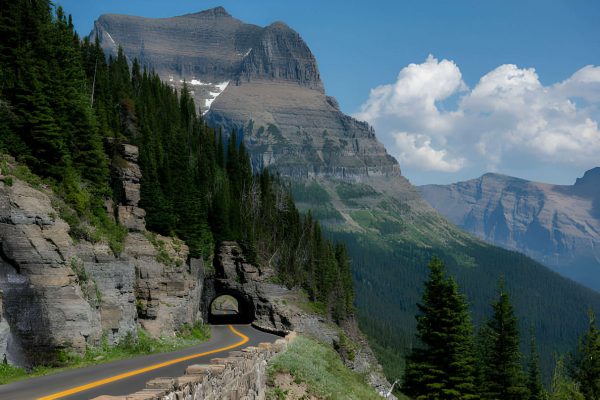
The sole road traversing Glacier National Park, the 50-mile Going-to-the-Sun Road, is a central element of most park visits. Linking the Apgar Visitor Center on the west side to the Saint Mary Visitor Center on the east, it reaches its highest point at Logan Pass, where the route crosses the Continental Divide.
Along the Going-to-the-Sun Road, five of Glacier’s 13 campgrounds are situated. The route is adorned with numerous picnic areas, pull-offs, and trailheads, offering breathtaking views of expansive glacier valleys alongside its impressive engineering from the 1930s.
To manage traffic, Glacier National Park has implemented a new Permit System for the Going-to-the-Sun Road, restricting the number of personal vehicles from late May to early September. During this snow-free period, permits, available 60 days in advance for specific days, tend to sell out quickly.
For convenient transportation, the park provides a free shuttle system, easing challenges like finding parking at Logan Pass. Additionally, Red Bus Tours, featuring the park’s iconic 1930s “Rubies of the Rockies” open-top vehicles, are available. Before opening to vehicle traffic in the spring, bicyclists have a two-week window for vehicle-free rides on the road.
2. Logan Pass
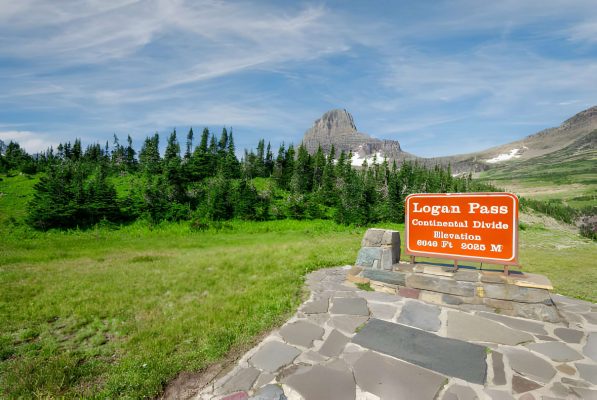
At an elevation of 6,646 feet, Logan Pass stands as the highest point accessible by vehicle in the park, serving as a prominent stop and approximately halfway point on the Going-to-the-Sun Road. This high-altitude pitstop boasts a backdrop of the ice-clad Clements and Reynolds Mountains, their meadows frequently adorned with wildflowers, providing a snapshot of Glacier’s grandeur.
The Logan Pass Visitor Center marks the starting point for two iconic hiking trails in Glacier. The Highline Trail leads to the Granite Park Chalet, while the Hidden Lake Trail winds through the Hanging Gardens area before reaching a breathtaking overlook of its namesake feature.
Wildlife encounters in the region often include marmots, mountain goats, and the occasional grizzly bear. Throughout the spring and summer, Bear Grass, the park’s signature flora, adorns Logan Pass. The Visitor Center atop the pass offers valuable information about the surrounding landscape.
Given the intense competition for parking atop the pass, the lot is typically full by 7 am during the summer, leading to a continuous cycle of cars waiting for an available spot. Reserving a seat on the free Going-to-the-Sun Road shuttle to Logan Pass helps mitigate these parking challenges.
3. Go for a Day Hike
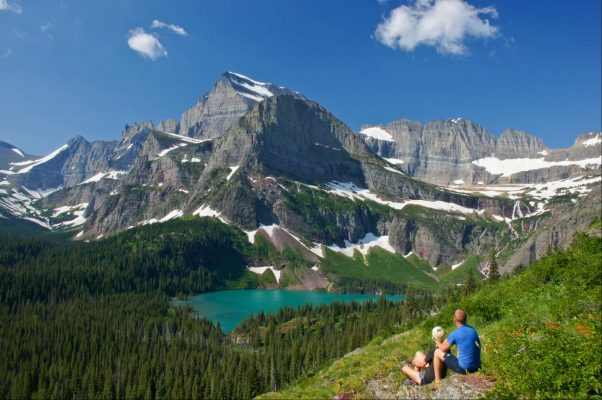
Glacier National Park boasts an impressive network of over 700 miles of trails that span the entire park, leading adventurers to breathtaking landscapes such as gleaming glaciers, expansive mountain passes, and lakes crowned with icebergs. For enthusiasts who revel in the joy of hiking, Glacier National Park offers an abundance of choices, akin to a child exploring a candy store.
Among the notable hikes in Glacier National Park are the Highline Trail at Logan Pass and Grinnell Glacier in Many Glaciers. For those seeking less crowded options, trails like Cobalt Lake and Siyeh Pass present captivating alternatives. With a multitude of trails to discover, it would take a decade of summers to explore every route winding through the park.
As all hiking trails traverse grizzly bear habitat, hikers must plan and take appropriate precautions. This includes carrying bear spray, hiking in groups, and generating sufficient noise while on the trails. Maintaining a distance of at least 100 yards from larger park mammals like bears and moose is crucial for safety. For further information on safe travel, visitors can consult the park’s guidelines on bear safety.
4. Visit the Many Glacier Region of the Park
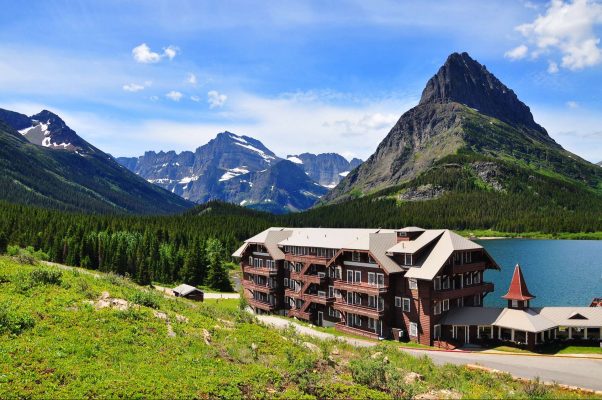
The Many Glacier region of the park, situated on the east side of the Continental Divide and not accessible from the Going-to-the-Sun Road, remains a highly sought-after destination due to its popularity for hiking trails, wildlife encounters, and lodging options.
The closest community to Many Glacier is Baab, located approximately 13 miles away, featuring a gas station and a general store. Baab is situated nine miles north of the St. Mary Village and Entrance Station.
At the heart of Many Glacier, the magnificent Many Glacier Hotel offers stunning views of Swift Current Lake and the surrounding mountain panorama. Boat rentals are conveniently located just below the expansive patio of the hotel. Other accommodation choices include the Swift Current Inn and Many Glacier Campground. However, the real gems of the area are the captivating hiking trails such as Cracker Lake and Grinnell Glacier.
The round trip to Grinnell Glacier spans just over 10 miles of hiking with an elevation gain of over 1,600 feet. Visitors can reduce the hiking distance by opting for a fee-based shuttle across Swift current Lake and Lake Josephine. Both routes provide breathtaking views of massive mountains and lush valley landscapes even before reaching Grinnell Glacier.
5. Avalanche Lake
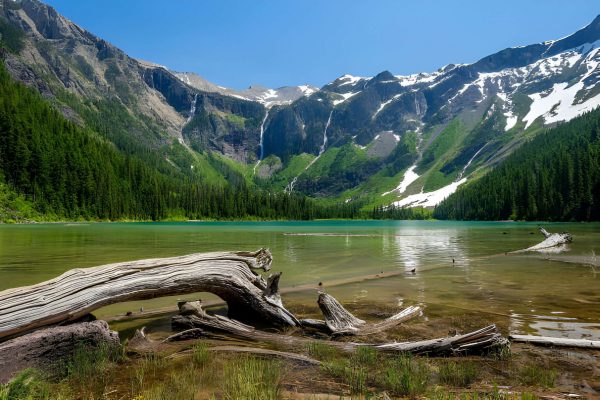
Avalanche Lake stands out as one of the most popular short hikes in Glacier, making it an excellent option for those exploring with novice hikers.
The trailhead is located near the shores of Lake McDonald on the east side of the park. In addition to providing access to the sparkling beauty of Avalanche Lake, the trailhead also serves as the starting point for the family-friendly Trail of the Cedars, covering less than a mile.
Spanning 2.3 miles, the trail initially winds along the deeply carved banks of Avalanche Creek, leading through a verdant forest before reaching the pristine waters of Avalanche Lake. Along the lakeshore, several spots are available, accommodating the large crowds that often gather during the summer months. Moreover, the trail itself is wide and designed to comfortably accommodate two-way traffic.
6. Hang Out at Lake McDonald & Apgar Village
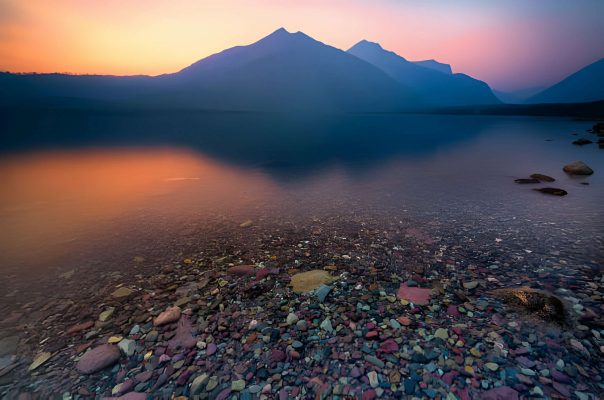
Lake McDonald stands as the largest body of water in Glacier and serves as the hub of activity on the park’s west side. It is frequently the initial destination for visitors entering from West Glacier, as its southern shore is less than two miles from the West Entrance, creating a captivating introduction to the area.
Within this glacially sculpted region of the park, there are four campgrounds, including Apgar Campground, which boasts 194 available sites. For those seeking an overnight stay, the historic Lake McDonald Lodge, built in the 1910s on the water’s edge, provides a charming option.
Located on the southwest shore near the entrance station, Apgar Village offers essential amenities such as a visitor center, a general store, and a selection of casual restaurants. This area is also home to concessionaires offering non-motorized boat rentals and guided horseback rides. Further up the eastern bank, Lake McDonald Lodge provides similar recreational services.
7. East Side and St. Mary Lake
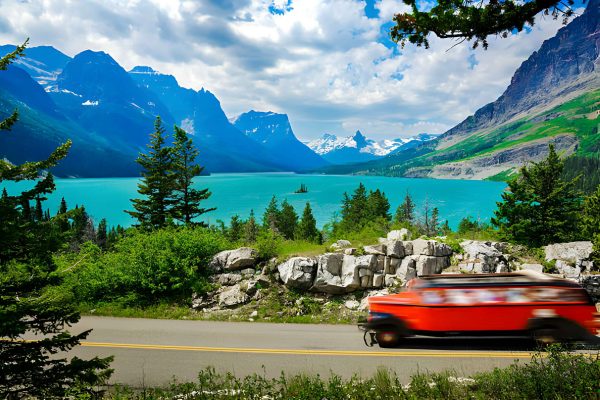
Stretching for 10 miles, St. Mary Lake stands out as the prominent feature near the East Entrance of Glacier National Park.
Situated near the far end of the lake and entrance station, the St. Mary Visitor Center serves as an information hub for park details, and visitors can also avail themselves of the free Going-to-the-Sun Road shuttle. Adjacent to the lake, the St. Mary Campground holds the distinction of being the second-largest campground in Glacier, offering 148 available sites.
The scenic route of the Going-to-the-Sun Road runs parallel to the northern shore, providing breathtaking views of the lake. One of the most photographed attractions is the diminutive Wild Goose Island, seemingly suspended in the middle of the water. Numerous pull-out areas along the shores provide ideal spots for picnics or lakeside relaxation.
Hiking trails originating from the St. Mary Valley include St. Mary Falls and Siyeh Pass from Sunrift Gorge. For additional camping options near St. Mary Lake, the Rising Sun Campground is available, and lodging can be found at the Rising Sun Motor Inn.
8. Ride a Bicycle on the Going-to-the-Sun Road
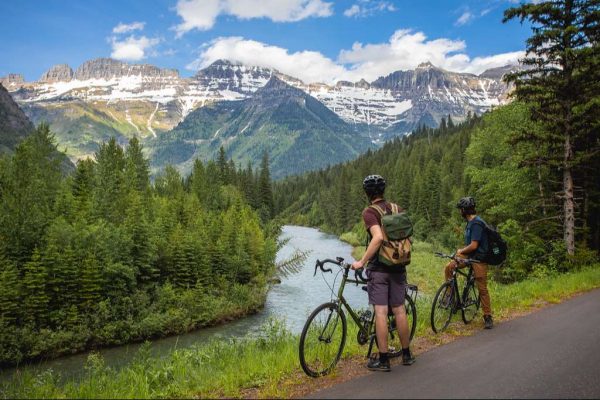
The optimal time for biking the Going-to-the-Sun Road is during spring when snowplows have initiated their operations, but the road is not yet officially open to motorized vehicles. Cyclists can continue to traverse the entire road until June 15th, even after it opens to vehicular traffic.
When cycling alongside vehicles on the Going-to-the-Sun Road, cyclists must exercise caution and adhere to good riding practices, such as wearing highly visible clothing and gear.
The specific dates and distances for vehicle-free cycling on the Sun Road are contingent on weather conditions, and cyclists must avoid areas where plow crews are actively working. For current information on the opening dates of the Going-to-the-Sun Road, Glacier National Park’s Road Status page provides up-to-date details.
Between June 15th and Labor Day, particular sections on the east side of the Going-to-the-Sun Road restrict bicycling due to congestion concerns. Additionally, mountain biking and trail riding are prohibited in Glacier National Park.
9. Waterton Lakes National Park, Canada
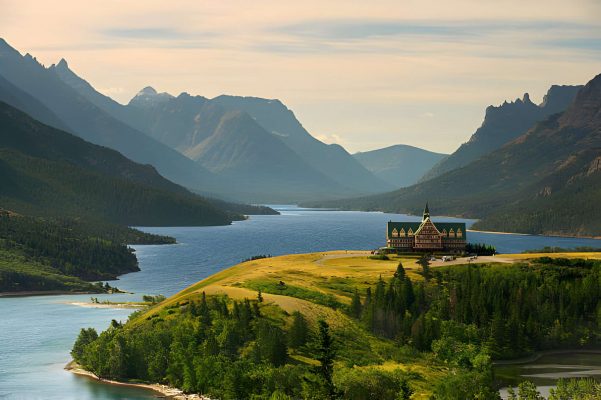
Constituting the latter portion of the Waterton-Glacier International Peace Park, Waterton Lakes National Park in Alberta is situated directly opposite the Goat Haunt area of Glacier National Park. The vastness of Glacier National Park reaches deep into Canada, and Waterton Lakes offers expansively diverse terrain for exploration.
Popular activities in Waterton Lakes National Park encompass exploring Red Rock Canyon, touring Waterton Village, and traversing the extensive network of hiking trails, including the renowned Crypt Lake Trail. For those seeking to traverse international boundaries, be prepared to present your passport at border crossings.
10. Spend the Night at a Campground
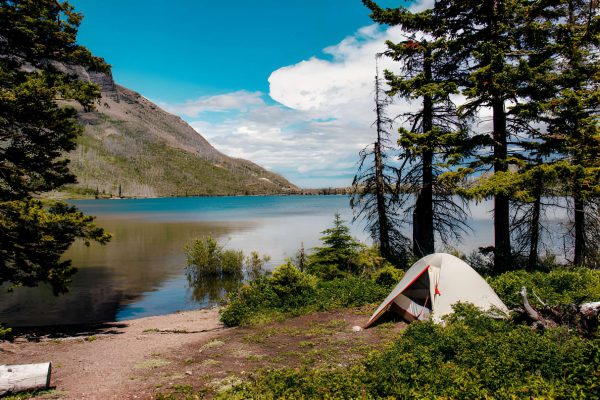
Considering its somewhat secluded location in northern Montana, the optimal way to immerse yourself in Glacier is by staying overnight. Glacier boasts 13 campgrounds within the park boundaries, and numerous private campgrounds are situated near different entrances, collectively constituting the finest campgrounds in Glacier.
Apgar Campground, the largest on the east side, tends to reach full capacity early in the morning throughout the summer. Saint Mary Campground, the largest on the east side that accepts advanced reservations, also consistently reaches full capacity.
On the eastern side, the Two Medicine and Many Glacier regions house popular campgrounds linked to various trails. For less crowded camping experiences in Glacier, more secluded areas like Bowman Lake and primitive campgrounds such as Cut Bank offer campsites that don’t fill up as quickly.
11. Explore Two Medicine
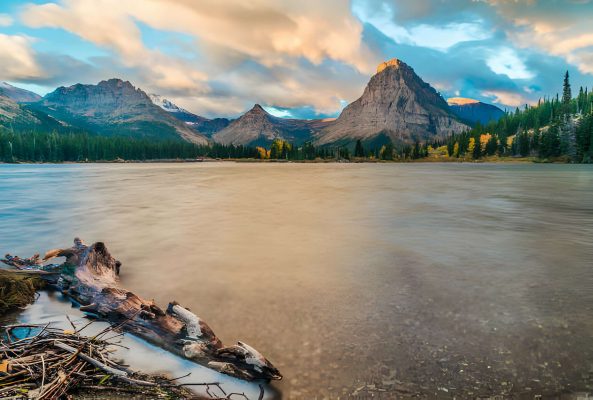
On the eastern side of the park, the Two Medicine region was once the primary destination for early visitors to Glacier. Following the construction of the Going-to-the-Sun Road, Two Medicine no longer served as the central hub of activity, but it retained all its mountain grandeur.
Two Medicine is now a less crowded and slightly more off-the-beaten-path destination in the park, centered around the glistening Two Medicine Lake. While not as popular as campgrounds like Apgar and St. Mary, the Two Medicine Campground also tends to reach full capacity during the peak summer season.
Several waterfalls provide excellent outlets for adventure in Two Medicine, including the easily accessible Running Eagle Falls. More challenging hiking trails like Pitamakan and Dawson Pass offer elevated views of the Two Medicine region. Boat tours are also available to ferry visitors across Two Medicine Lake.
FAQs
Q: Is Glacier National Park open year-round?
A: Yes, the park is open year-round, but certain areas may be inaccessible during winter.
Q: Are there guided tours available in the park?
A: Yes, Glacier National Park offers ranger-led programs and guided tours for visitors.
Q: What wildlife can I expect to see in the park?
A: Wildlife includes bears, bighorn sheep, mountain goats, and a variety of bird species.
Q: Can I camp in the park without a reservation?
A: While some campsites allow first-come, first-served camping, reservations are highly recommended.
Q: Are there dining options inside the park?
A: Yes, there are restaurants within the park, offering a variety of dining experiences.

